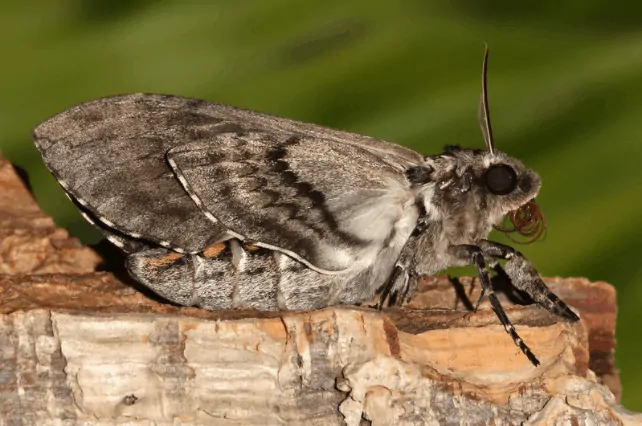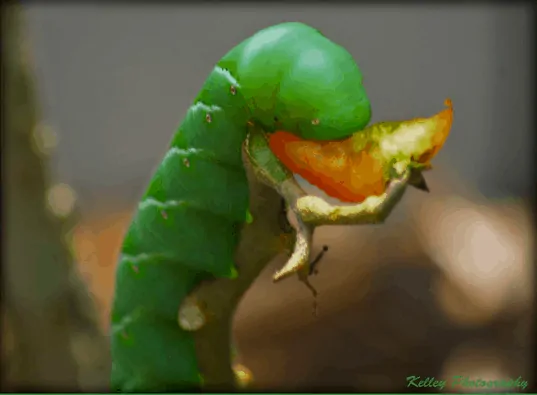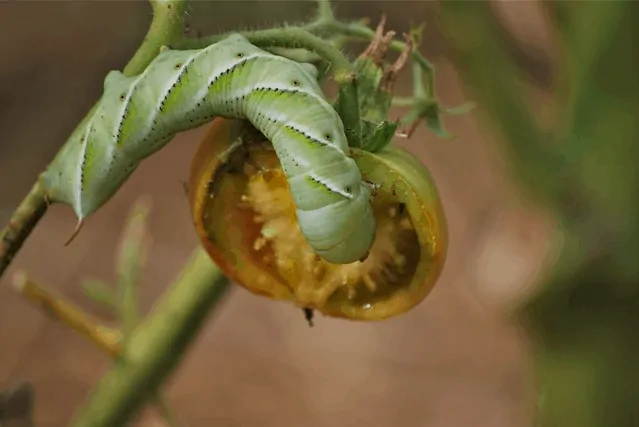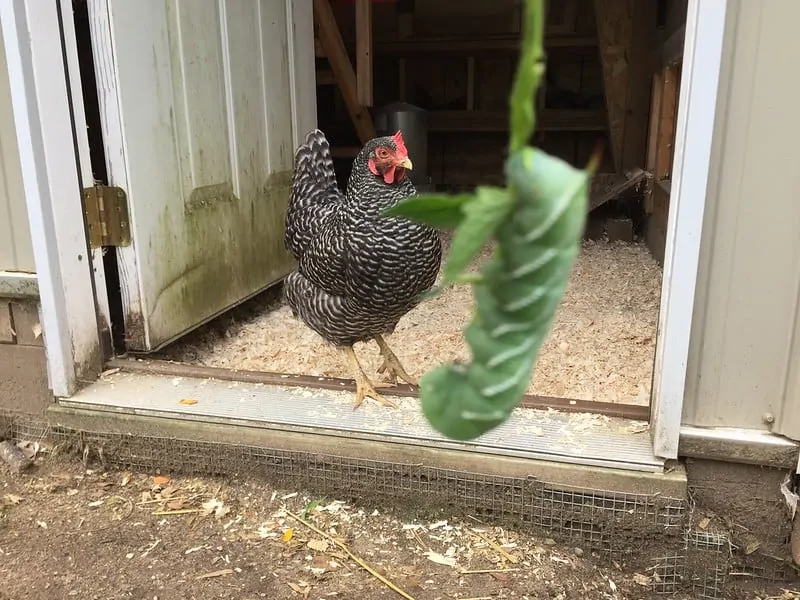Tomato Plant Worm - A Closer Look
Let's take a closer look at this destructive, yet surprisingly adorable pest! Learn more about the tomato hornworm!
We talked about the tomato plant worm, also known as the tomato hornworm in our index of garden pests. This is a more in-depth look at this creature, simply because I find it fascinating! In this article, we will talk not just about the caterpillar, which is the destructive form of this creature, but also about the moth that it grows into if allowed and about ways to get rid of this pest. There’s even a list of unexpected benefits of this creature at the very end of the article!
Tomato Plant Worm: The Caterpillar
There are three stages of caterpillars or larvae. The smallest that emerges from the eggs, an intermediate one, and the large one, that is the most destructive and the one that will become the moth. The tomato hornworm is, in my opinion, absolutely adorable, right up there with moles. It is harmless to humans and overall a quite cute, large, and chunky caterpillar. It doesn’t even have the little hairs that cover many other caterpillars and that people dislike. Just look at the picture and see for yourself!
The tomato plant worm is easily recognized by the black spots on its sides and the little projection they have on their rear end. This earned it the nickname “hornworm”, and by its favorite food, tomatoes. In its largest phase, it can get as big as 10 centimeters (4 inches) and as thick as a finger, making it easy to spot. This is the shape that pupates and turns into the five-spotted hawkmoth.
These guys are closely related to the tobacco hornworm and they look very much alike. The only notable difference is that the tobacco hornworm has white stripes on its sides instead of spots. They share food sources, behaviors, and even predators. And while you will not find them on the tomatoes you grow as decorative plants, they are frequent visitors in your garden.
Tomato Plant Worm: The Moth
The big green fellow above pupates in fall and the moth comes out. It spends the winter in the ground, near the plant where it grew up, then comes out in spring, with the first flowers. It flies at night, which is why it is classified as a moth, and in this form, it really does only good. The moth pollinates mostly night-blooming flowers and decorates the garden. It is very friendly to humans, as it doesn’t see us as a threat and will gladly sit in your hand if you are patient enough.
The five-spotted hawkmoth gets as long as the larvae it came from and has a wingspan of up to 15 centimeters (6 inches). It is covered in thick, soft fur and has large, beady eyes and a long trunk it uses to draw nectar from the flowers. Its legs are also soft and they have an incredibly good grip, allowing you to carry it around in your hand. In summer, it also mates and lays eggs on the tomato plant. Sometimes these gentle giants will wander indoors in search of light and you will find them on your flowering plants. Just pick them up and gently kick them out.
How To Get Rid Of It
Cute as they may be, a couple of these large worms can strip a tomato plant clear of its leaves, flowers, and fruit in a few days. And a single adult can lay hundreds of eggs, enough to infest a tomato plot in just a few years. In temperate areas, there is one generation of hornworms per year, but that is enough to multiply exponentially and destroy your plants. And if you have just a few tomato plants, the second generation of caterpillars can easily clean your vegetable bed.
There is no doubt that the tomato plant worm is a pest. And for the sake of your harvest, you need to get rid of it. Once they reach stage three, our hungry friend from above, they are large enough to easily spot. You can pick them off by hand and drop them in a bucket for later use. You can use traps to catch adult moths before they lay their eggs or you can treat your plants with insecticides to get rid of the smaller larvae.
Alternatively, you can find natural methods of control, like encouraging predators to move in or planting repelling plants. In this case, a healthy amount of marigolds and basil, planted in between and around the tomato patch should get the job done nicely.
Surprising Benefits Of The Tomato Plant Worm
There are two main benefits of having tomato plant worms in your garden. One is more interesting for small farmers and the other is good news for all gardeners alike:
-
They feed chickens
At 4 inches (10 centimeters) long, the hornworms make a hearty and filling breakfast for domestic birds, such as chicken. This is why, if you are a small farmer, who grows a few rows of tomatoes and a couple of chicken, they are going to be very happy. The hornworm is full of protein and your clicking friends will thank you for that. You can even teach them to recognize the caterpillars, then let them roam the tomato plot. They will find your pests with even more eager eyes than you! Just look at that intense stare! Plus, you can use the manure as a bonus besides the regular organic fertilizer you have.
-
They raise guardians
Tomato plant worms make an appetizing meal for wild birds as well, and they will nest near a tomato patch to have easy access to them. Smaller birds, like sparrows, may even take on the smaller sizes of caterpillars. Not just birds are attracted to these succulent creatures. Parasitoid wasps use the hornworm as a host for its own larvae, killing the worm. And a healthy population of wasps keeps smaller pests under control as well, like mites and more destructive caterpillars, which can carry plant diseases as well.
Final Thoughts
Have you ever encountered the tomato plant worm in your garden? Which form did you find and how did you get rid of it? Let me know your opinion on this creature and your solutions in the comments section below. I can’t wait to hear from you!







